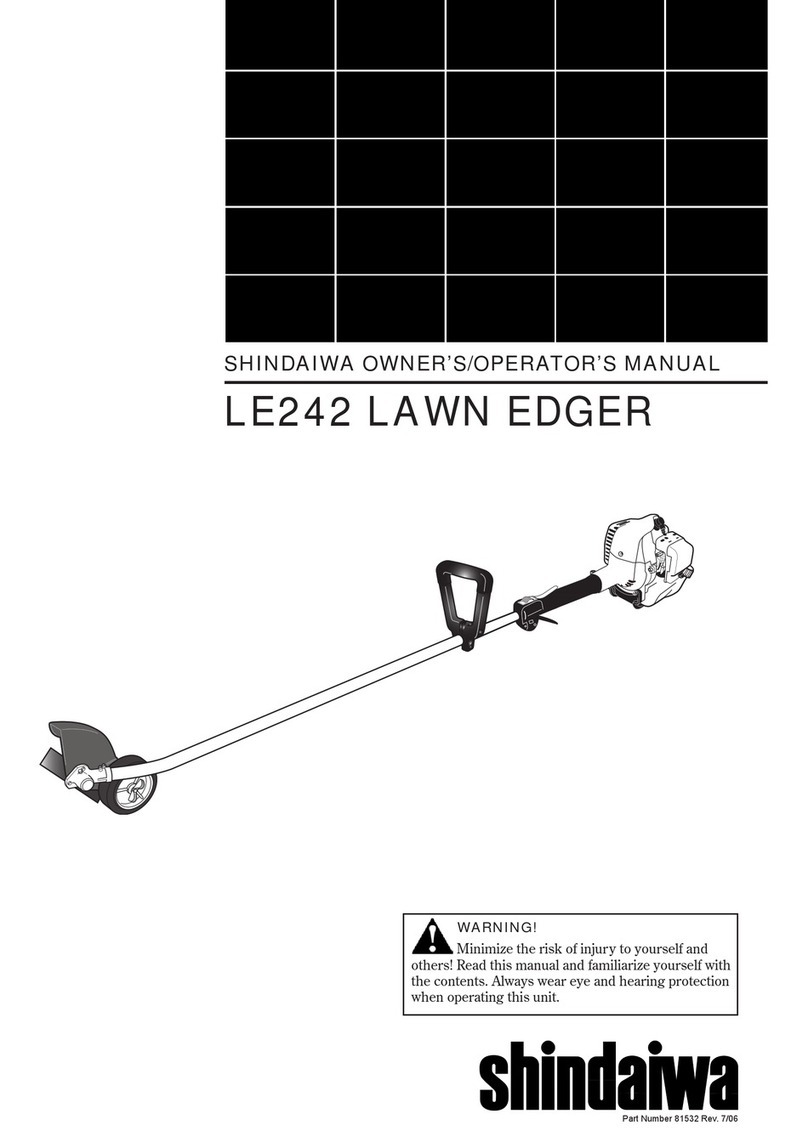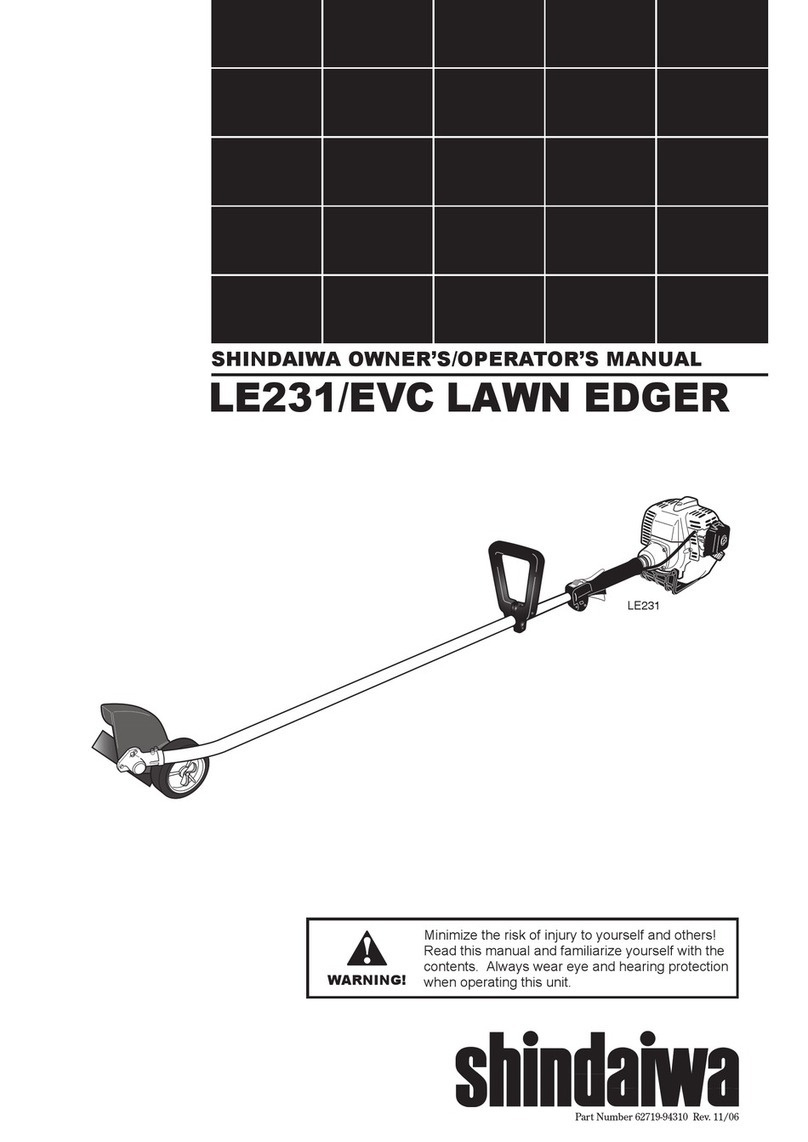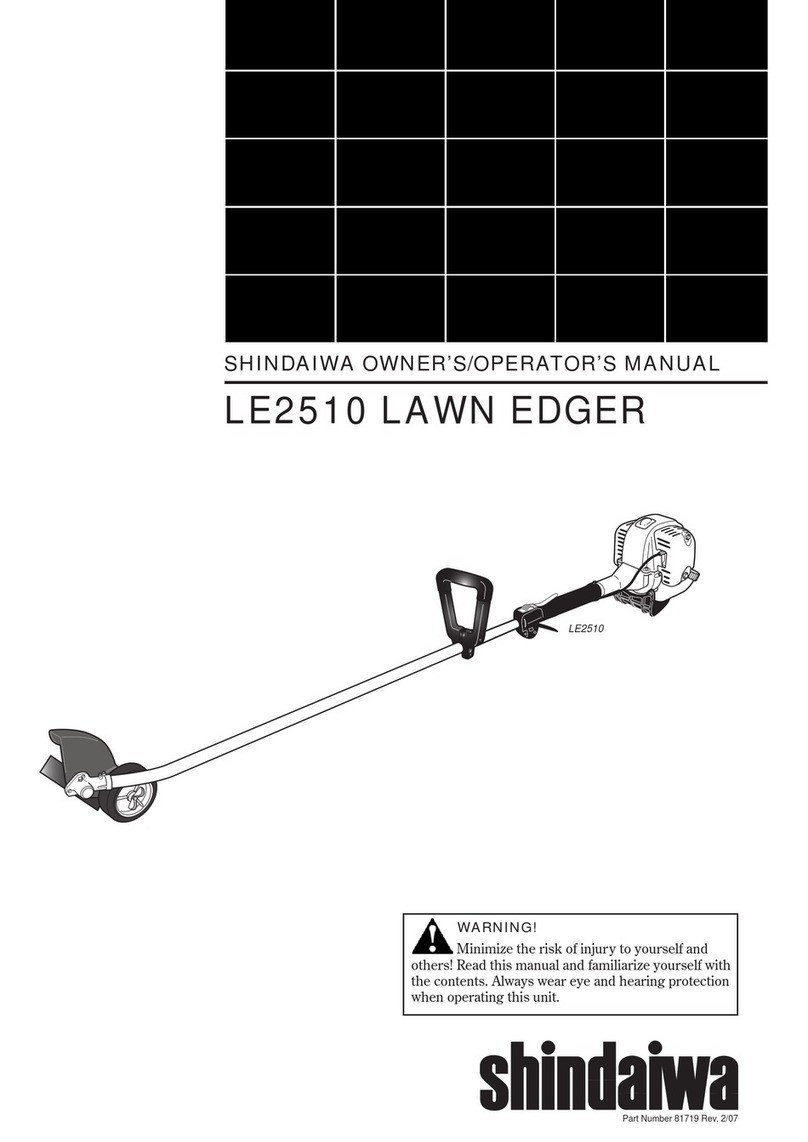2
WARNING!
Use Good Judgment
NEVER operate the engine when trans-
porting the unit.
NEVER operate the engine indoors!
Make sure there is always good ventila-
tion. Fumes from engine exhaust can
cause serious injury or death.
ALWAYS stop the unit immediately if
it suddenly begins to vibrate or shake.
Inspect for broken, missing or improp-
erly installed parts or attachments.
ALWAYS keep the unit as clean as
practical. Keep it free of loose vegeta-
tion, mud, etc.
ALWAYS hold the unit firmly with both
hands when cutting or trimming, and
maintain control at all times.
ALWAYS keep the handles clean.
ALWAYS disconnect the spark plug
wire before performing any
maintenance work.
Introduction
Attention Statements .................................. 2
Safety Information ....................................... 2
Safety Labels ................................................ 4
Product Description .................................... 5
Specifications ............................................... 5
Assembly ...................................................... 6
Engine Fuel ................................................. 8
Starting the Engine ..................................... 9
Stopping The Engine .................................. 9
Adjusting Engine Idle ............................... 10
Checking Unit Condition ......................... 10
Using the Edger ........................................ 10
Maintenance .............................................. 11
Muffler Service ......................................... 14
Long Term Storage ................................... 14
Troubleshooting Guide ............................ 15
Emission System Warranty ...................... 17
PAGE
The Shindaiwa 260-series hand held power
equipment has been designed and built to
deliver superior performance and reliability
without compromise to quality, comfort,
safety, or durability.
Shindaiwa’s high-performance engines rep-
resent the leading edge of 2-cycle engine
technology, delivering exceptionally high
power with remarkably low displacement
and weight. As an owner/operator, you’ll
soon discover for yourself why Shindaiwa is
simply in a class by itself!
IMPORTANT!
The information contained in this manual
describes units available at the time of
publication.
Shindaiwa Inc. reserves the right to make
changes to products without prior notice,
and without obligation, to make alterations
to units previously manufactured.
Contents
WARNING!
The engine exhaust from this product
contains chemicals known to the State
of California to cause cancer, birth de-
fects or other reproductive harm.
Throughout this manual are special
“Attention Statements”.
IMPORTANT!
The operational procedures described in
this manual are intended to help you get
the most from your unit, and to protect you
and others from harm. These procedures
are guidelines for safe operation under most
conditions, and are not intended to replace
any safety rules and/or laws that may be in
force in your area.
If you have questions regarding your 260-
series unit, or if you do not understand
something in this manual, your Shindaiwa
dealer will be glad to assist you.
You may also contact Shindaiwa, Inc. at the
address printed on the back of this Manual.
Attention Statements
CAUTION!
A statement preceded by the word
“CAUTION” contains information that
should be acted upon to avoid damag-
ing the unit.
IMPORTANT!
A statement preceded by the word
“IMPORTANT” is one that possesses
special significance.
NOTE:
A statement preceded by the word “NOTE”
contains information that is handy to know
and may make your job easier.
WARNING!
A statement preceded by the trian-
gular attention symbol and the word
“WARNING” contains information that
should be acted upon to prevent seri-
ous bodily injury.





































